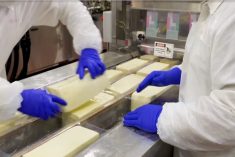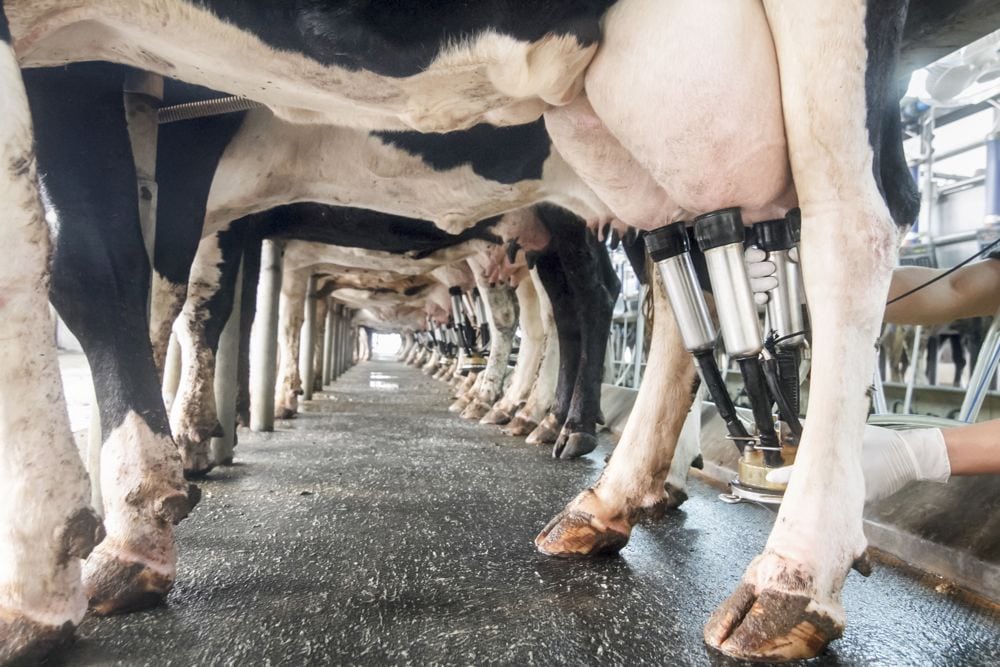The Ontario Veterinary College has added a dairy animal welfare rotation to its fourth-year curriculum, as part of an increased focus on animal well-being.
The rotation is offered through the Campbell Centre for the Study of Animal Welfare at the University of Guelph, where research has been conducted on animal welfare for 25 years.
Montreal-based dairy processor Saputo is funding some of the costs of the rotation, as part of its stated commitment to animal welfare research and training.
“Saputo knew of Campbell Centre and they came to the centre and said they would like to invest in animal welfare,” said Dr. Derek Haley, the co-coordinator of the dairy welfare rotation and an OVC professor. “They were particularly interested in dairy veterinarians. We suggested the rotation and they agreed.”
Read Also

Ample supplies and improved livestock sector to boost Canadian feed sector: FCC
Abundant feed grain supplies and improved profitability for the livestock sector should support strong feed demand and sales through the winter, says a new report from Farm Credit Canada.
Dairy farmers will soon be audited based on animal welfare as part of the proAction quality assurance program. That auditing will be first done by Holstein Canada, but Haley said veterinarians will have a role to play in preparing farmers for the audits and to help them interpret results.
“Vets will be more in a role of coaching their clients,” he said.
Veterinary students spend their fourth year rotating among different specialty subjects, such as surgery, pathology or radiology, and placements in veterinary clinics. This exposes them to different areas of expertise and gives them specific training.
Jodi Bierworth, a fourth-year OVC student, was in the first dairy cattle welfare rotation and said she found it valuable as it showed the students how to apply the proAction assessment. The practical lessons were useful.
“Being accurate at lameness scoring takes a lot of practice,” she said. “Some of the measures are a bit easier to score, but I found that lameness was the most difficult for me. I also learned how being confident in assessing dairy cattle welfare, and knowing what practical changes can be made to see improvements, can really add value for your clients.”
Haley, who teaches the core animal welfare content to the students in earlier years, co-coordinates the program with Dr. Todd Duffield. Both are faculty in OVC’s department of population medicine.
The Saputo funding has helped to hire a dairy care manager, Dr. Lena Levison, to run the animal welfare rotation.
Animal well-being has moved beyond health and diagnosing and treating disease, Haley said.
“For a long time, veterinarians felt that looking after the health of an animal was sufficient to ensure an animal’s welfare,” he said. “Understanding what animals experience is much more nuanced now. Health is necessary, but not sufficient in itself to ensure an animal has a good life.”
The new one-week dairy cattle welfare rotation is the first of its kind at a Canadian veterinary school and is attracting interest from other colleges.
For example, students from the University of Saskatchewan’s Western College of Veterinary Medicine and the veterinary medicine faculty at the Universite de Montreal were part of the first dairy welfare rotation.
The Saputo funding, which also focuses on training for farmers and practicing veterinarians, followed the release of the Chilliwack Cattle Sales covert video in 2014, which created significant consumer concern about dairy farm production practices.
— John Greig is a field editor for Glacier FarmMedia based at Ailsa Craig, Ont. Follow him at @jgreig on Twitter.

















